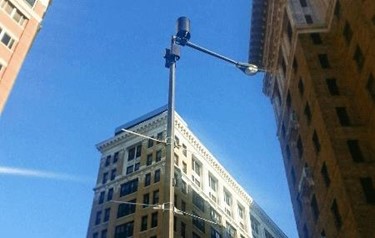The Week In 5G: 6/1/2018 – 3GPP Set To Announce Final Phase-1 Standard In June; 5G Sparks Security and Health Concerns Anew
By Jof Enriquez, Follow me on Twitter @jofenriq

The Third Generation Partnership Project (3GPP) has finalized the 5G Phase-1 Standard and is set to formally announce it during a general meeting to be held in the United States in June, reported Techspot. This accelerates the commercial implementation of 5G services, which are 10-20 times faster than current 4G LTE networks.
AT&T and Verizon each claim to be the frontrunner in delivering 5G connectivity in the U.S. Both carriers are preparing trials for mobile 5G applications using 28GHz technology. AT&T will demonstrate a "mobile" 28GHz demonstration at E3, while Verizon Wireless plans to test "fixed base stations and mobile terminals operating in the 28 GHz band," according to Light Reading.
Verizon seems bent on building the largest fiber network in the U.S. to support its 5G rollout, which will start across four U.S. cities by the end of 2018.
“We’re charging ahead. I have never seen a technology that is as disruptive and has as much benefit to consumers as 5G,” said Verizon CEO Lowell McAdam, according to Wealth Daily.
In contrast, AT&T is backing off a bit, citing the cost of connecting additional fiber to small cells.
“Challenges for us, it’s not the network and the team can build it or they have the knowledge, they can. It’s the cost efficiency,” said AT&T Senior EVP and CFO John Stephens, reported Telecompetitor. “In a general residential broadband solution, the economics for us don’t seem to work.”
Business reasons aside, carriers are facing renewed concerns over cellular radiation's potential to cause cancer. The rush to 5G implementation has raised hackles among some consumers, who fear that the 300,000 new antennas — roughly equal to the total number of cell towers built in the U.S. over the past three decades — will pose an even greater risk to health, according to CBS News.
5G requires the installation of small cells spaced closer together than regular cell towers. This is because high-frequency millimeter waves supporting faster speeds cannot travel as fast as current frequencies in the congested RF spectrum. Wireless companies plan to install small cells in utility or light poles to make 5G work.
“The cell towers are called small cell towers, but they are not so small when they are in your front yard,” Donna Barron, a resident of Montgomery County, Maryland, told CBS News. “This will cause cancer,” added Barron, who reportedly was one of several people who raised health concerns about the radiation emitted by the equipment at a government hearing last month.
Dr. Joel Moskowitz, a public health professor at the University of California, Berkeley, told the Daily Mail that millimeter waves could “affect the eyes, the testes, the skin, the peripheral nervous system, and sweat glands” and may “make some pathogens resistant to antibiotics.”
According to the National Cancer Institute, “A limited number of studies have shown some evidence of statistical association of cell phone use and brain tumor risks, but most studies have found no association.”
In a statement, the trade association CTIA, said, “following numerous scientific studies conducted over several decades, the FCC, the FDA, the World Health Organization, the American Cancer Society and numerous other international and U.S. organizations and health experts continue to say that the scientific evidence shows no known health risk to humans due to the RF energy emitted by antennas and cellphones,” reported the CBS affiliate in Sacramento, where Verizon is rolling out the first 5G service in the U.S. later this year.
While wireless companies are expected to ratchet up the 5G hype, security experts advise companies to also turn their attention on new threats posed by this new technology.
In interviews with Mobile World Live (MWL), Samsung, Nokia, and AT&T pointed out that a massive leap in the number of devices on the network will increase the number of vulnerabilities. These include distributed denial of service (DDoS) attacks against the 5G RAN carried out using the IoT, as well as vulnerabilities brought about by the shift in network architecture to a three plane approach (access, forwarding and control) in 5G.
MWL noted that 3GPP has a dedicated security group, working alongside its architecture and RAN groups to identify threats, requirements and solutions to problem areas.
All these layers of technical problems and deployment costs mean companies would crawl, instead of run, with their 5G implementation.
“We have all these technologies, none of them fully mature, and all of them will cost their vendors lots and lots and — one more time, with feeling — lots of money,” according to Computer World.
Compounding the deployment problem are regulatory hurdles in the state and local levels.
“Towns and municipalities are exacerbating the already sluggish and costly process by charging Internet service providers (ISPs) at an exorbitant rate to install small cells,” Albert Wynn, a former Democratic member of the U.S. House of Representatives, wrote in an article published in The Hill. “The Federal Communications Commission’s vote to streamline the small cell approval process back in March is a positive first step, but some local officials harbor reservations about the path to 5G.”
Wynn calls on officials to streamline rules to fast-track 5G small cell deployment in the U.S., which by some accounts have fallen behind Asian and European countries.
Because most first 5G networks likely won't be operational soon, the first 5G phones aren't expected until 2019. Motorola (under Lenovo) wants to beat other manufacturers to the punch, though, with a "Moto Mod" attachment to the back of its Moto Z3 Play phone. Images of the 5G Moto Mod purportedly from internal Lenovo material were released this week by XDA-Developers, which showed an "antennae lip at the top" of the modular attachment.
